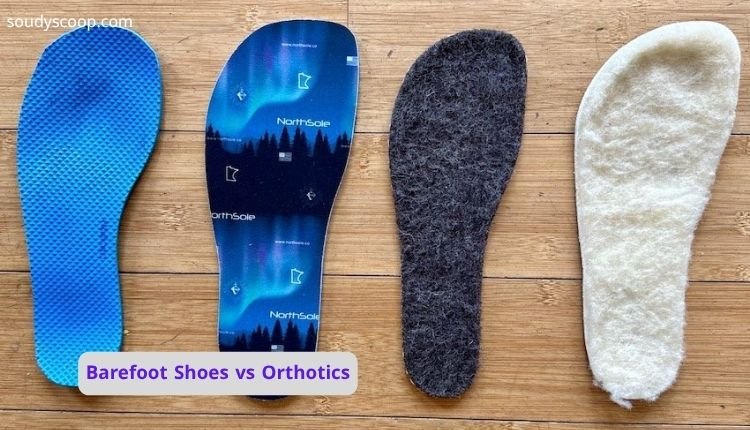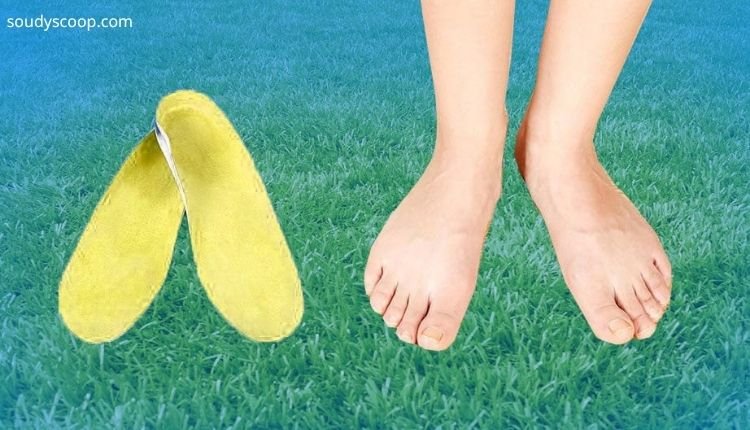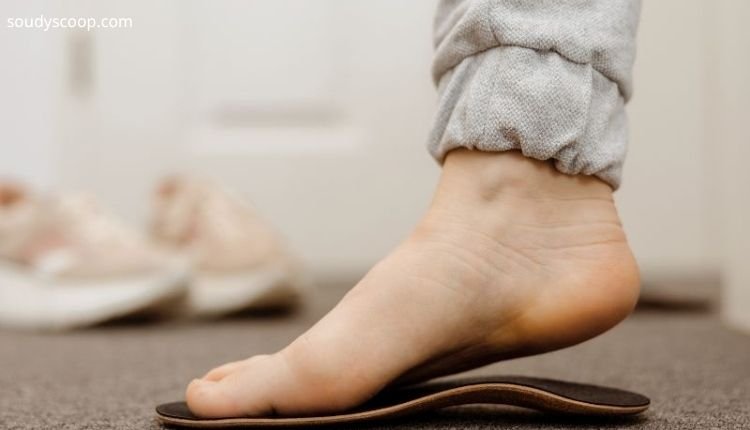Barefoot Shoes vs Orthotics: Myths, Truths, and the Real Impact on Your Feet

In recent years, the debate over barefoot shoes vs orthotics has become one of the hottest topics in the world of foot health and fitness. Advocates of barefoot shoes claim they help strengthen muscles, improve posture, and return us to our “natural” way of walking.
Table of Contents
On the other hand, supporters of orthotic and supportive footwear argue that most people need stability and cushioning to prevent injuries.
So, what’s the truth? Are barefoot shoes a revolution in natural walking—or just another fitness fad? Based on thousands of patient experiences and credible research, this article breaks down the myths, realities, and science behind both barefoot shoes and orthotics.
The Barefoot Shoes Debate: Facts vs Myths
Myth #1: Barefoot Shoes Are Suitable for Everyone
One of the biggest misconceptions is that barefoot shoes are universally beneficial. Many enthusiasts claim they “straighten your legs” and “strengthen your muscles.” However, the reality is far more complex.
According to Dr. Tom Biernacki, a podiatrist with years of experience treating patients with foot and gait issues, the suitability of barefoot shoes varies widely. People have different biomechanics—some benefit immediately, while others experience injuries like ligament damage or stress fractures within weeks.
A 2015 study by Hollander in the Journal of Foot and Ankle Research found that even long-term minimalist shoe users displayed high variability in walking patterns. This means there is no one-size-fits-all solution—a personalized approach is essential.
If you already have straight hips, knees, and feet, barefoot walking can help strengthen your muscles safely. But if one knee turns inward or your hips are misaligned, barefoot walking can quickly lead to problems like shin splints, Achilles tendinitis, or plantar fasciitis.
Myth #2: Barefoot Shoes Eliminate Injury Risk
Another popular claim is that switching to barefoot shoes prevents running-related injuries. Unfortunately, that’s not true.
Barefoot walking changes your gait—you take shorter, faster steps and rely more on your forefoot. While this reduces some joint stress, it also increases the load on your bones and tendons.
A 2013 study by Ridge in Medicine & Science in Sports & Exercise discovered that bone swelling (bone marrow edema) significantly increased in runners during the first two months of barefoot training. So while barefoot running might feel more “natural,” it can raise the risk of stress fractures if not introduced gradually.
Barefoot shoes offer less cushioning and more impact. For heavier or less flexible individuals, this can translate into heel pain, tendon injuries, or foot fatigue.
“Read Also: Best Shoes for Flat Feet“
Myth #3: Barefoot Shoes Automatically Improve Running Form
Barefoot advocates often claim that minimalist shoes “fix” your running form. While it’s true that they encourage a forefoot strike and a higher cadence, this doesn’t guarantee better form or fewer injuries.
A 2016 study by Fuller in The Journal of Sports Medicine and Physical Fitness found that barefoot running alters strike patterns—but does not necessarily reduce injury rates.

Barefoot shoes can help you become more aware of your technique, forcing you to walk or run with better control. However, without proper strength and flexibility, the increased vertical compression on your joints may lead to overuse injuries.
“Read Also: Football Boots“
Myth #4: Transitioning to Barefoot Shoes Is Easy
Transitioning to barefoot shoes is not quick or effortless. Your ligaments, tendons, and muscles need time to adapt to the reduced support and cushioning.
A 2018 study in the Posture Journal by Johnson emphasized the need for a gradual transition lasting several months. Dr. Biernacki recommends starting slow—spend just a few minutes per day in barefoot shoes, increasing over time.
Your body needs around six weeks to adjust to new biomechanical stress. If you experience pain, don’t push through it—ease back, rest, and strengthen your supporting muscles before progressing.
Myth #5: Barefoot Walking Is the “Natural” Human State
Many argue that walking barefoot is natural, claiming our ancestors thrived without modern shoes. However, this comparison is flawed.
Ancient humans had vastly different lifestyles—they walked on soft ground, developed strong biomechanics over time, and didn’t live long enough to suffer from chronic joint problems. In contrast, modern humans spend hours sitting, driving, and walking on hard, flat surfaces.
A 2011 Nature study by Lieberman showed significant variability in how lifelong barefoot populations run. Even among those who never wore shoes, foot strike patterns differed widely due to genetics and environment.
In other words, being barefoot is not inherently better—it depends on your unique anatomy and movement patterns.
“Read Also: Air Jordan 40 vs Nike LeBron 23“
The Role of Orthotics and Supportive Shoes
Orthotics and supportive shoes exist for a reason: they help correct alignment issues and reduce stress on your joints and muscles. For many people—especially older adults, those with neuropathy, arthritis, or chronic pain—orthotics provide essential stability.

Custom orthotics, in particular, can realign your posture from the hips down, minimizing pain in the knees, lower back, and feet. Modern technologies like 3D scanning and motion capture allow podiatrists to analyze gait patterns and design precise orthotic solutions.
Think of it this way: if you squat in a gym with poor form, you’ll get injured. The same applies to walking. If your legs or hips are misaligned, barefoot walking amplifies the imbalance. Orthotics, on the other hand, help you “walk straight” before transitioning to barefoot shoes safely.
“Read Also: Best Football Boots Comparison“
Finding the Right Balance
So, should you go barefoot or stick with supportive shoes? The answer depends entirely on your biomechanics and health condition.
- If you have straight, healthy joints, barefoot shoes can strengthen your muscles over time.
- If you suffer from pain, instability, or tightness, start with supportive shoes or orthotics to correct alignment first.
- Once your body adjusts, you can gradually increase barefoot time to build natural strength and balance.
The best results come from combining both approaches intelligently—using supportive footwear when needed and barefoot walking for short periods to improve sensory feedback and muscle activation.
The Biomechanical Exam: The Key to Safe Walking
Before making the switch, get a biomechanical exam from a qualified podiatrist. This evaluation analyzes your hips, knees, ankles, and feet to identify tightness, misalignment, or instability.
Just like an orthodontist straightens teeth gradually, your gait can be corrected progressively with custom or pre-made orthotics. As your muscles adapt and your posture improves, transitioning to barefoot shoes becomes safer and more effective.
Dr. Biernacki emphasizes that with the right sequence—starting with orthotics, strengthening gradually, and monitoring progress—nearly 100% of his patients see improvement without needing surgery or expensive treatments.
“Read Also: Best Turf Soccer Shoes 2025“
Pros and Cons of Barefoot Shoes
| Pros | Cons |
|---|---|
| Encourages natural gait and muscle strengthening | Increases risk of stress fractures if used too soon |
| Improves foot sensory awareness | Less cushioning and protection |
| Promotes better balance and proprioception | Requires long adaptation period |
| Can prevent overstriding and knee stress | Not suitable for those with flat feet or instability |
Common Questions About Barefoot Shoes vs Orthotics
1. Are barefoot shoes better than orthotics?
Not necessarily. Barefoot shoes work well for individuals with perfect alignment and strong muscles. Orthotics are better for those with biomechanical issues or chronic pain.
2. How long does it take to adjust to barefoot shoes?
Most people need at least six weeks to several months to adapt safely. Start gradually and increase your barefoot time slowly.
3. Can barefoot shoes cause injuries?
Yes, if used incorrectly. Sudden transitions can cause stress fractures, tendonitis, and heel pain. Always ease into them.
4. Should I get a biomechanical exam before switching?
Absolutely. A gait analysis identifies alignment issues and helps design the best plan for your transition.
5. Are orthotics outdated or unnecessary?
Not at all. Orthotics remain one of the most effective, low-cost ways to correct gait problems and prevent surgery.
Barefoot Shoes vs Orthotics: the Conclusion
The barefoot vs orthotics debate isn’t about which one is “better.” It’s about understanding your body and choosing what fits your biomechanics, health, and lifestyle.
Barefoot shoes can strengthen your feet, improve awareness, and promote natural motion—but only if your posture and gait are already stable. Orthotics and supportive shoes, on the other hand, can restore alignment and prevent pain for those who need extra support.
The smartest approach is balance: strengthen your body, correct your gait, and progress gradually. Whether you walk barefoot or with orthotics, the ultimate goal is the same—move comfortably, safely, and pain-free.
As a dedicated footwear reviewer, I have spent years analyzing and testing athletic shoes across every category, from high-performance running sneakers to lifestyle-inspired basketball silhouettes. My work goes beyond simple first impressions; each review is built on a foundation of hands-on experience, thorough research, and attention to the details that matter most to athletes and casual wearers alike. I aim to bridge the gap between brands’ marketing claims and real-world performance, giving readers an honest, balanced perspective.
My writing style combines technical evaluation with an accessible tone, so both professionals and everyday enthusiasts can understand the strengths and weaknesses of each shoe. Whether discussing midsole cushioning technology, outsole traction, or upper material breathability, I break down complex features into practical insights. Readers trust my reviews because they know I highlight both the benefits and potential drawbacks, helping them make more confident purchasing decisions.
Over time, my work has evolved into a comprehensive resource for anyone seeking guidance on athletic footwear. I regularly compare new releases with previous models to highlight improvements or missed opportunities, while also exploring how different shoes fit specific activities—such as marathon training, weightlifting, or casual streetwear. By staying updated with industry trends and listening to community feedback, I ensure that my reviews remain relevant, informative, and genuinely useful.
Ultimately, my mission is to provide clarity in a crowded market. With countless options available, choosing the right pair of shoes can feel overwhelming. Through in-depth, unbiased, and engaging reviews, I strive to make that decision easier, equipping readers with the knowledge they need to find footwear that truly matches their performance goals and personal style.




